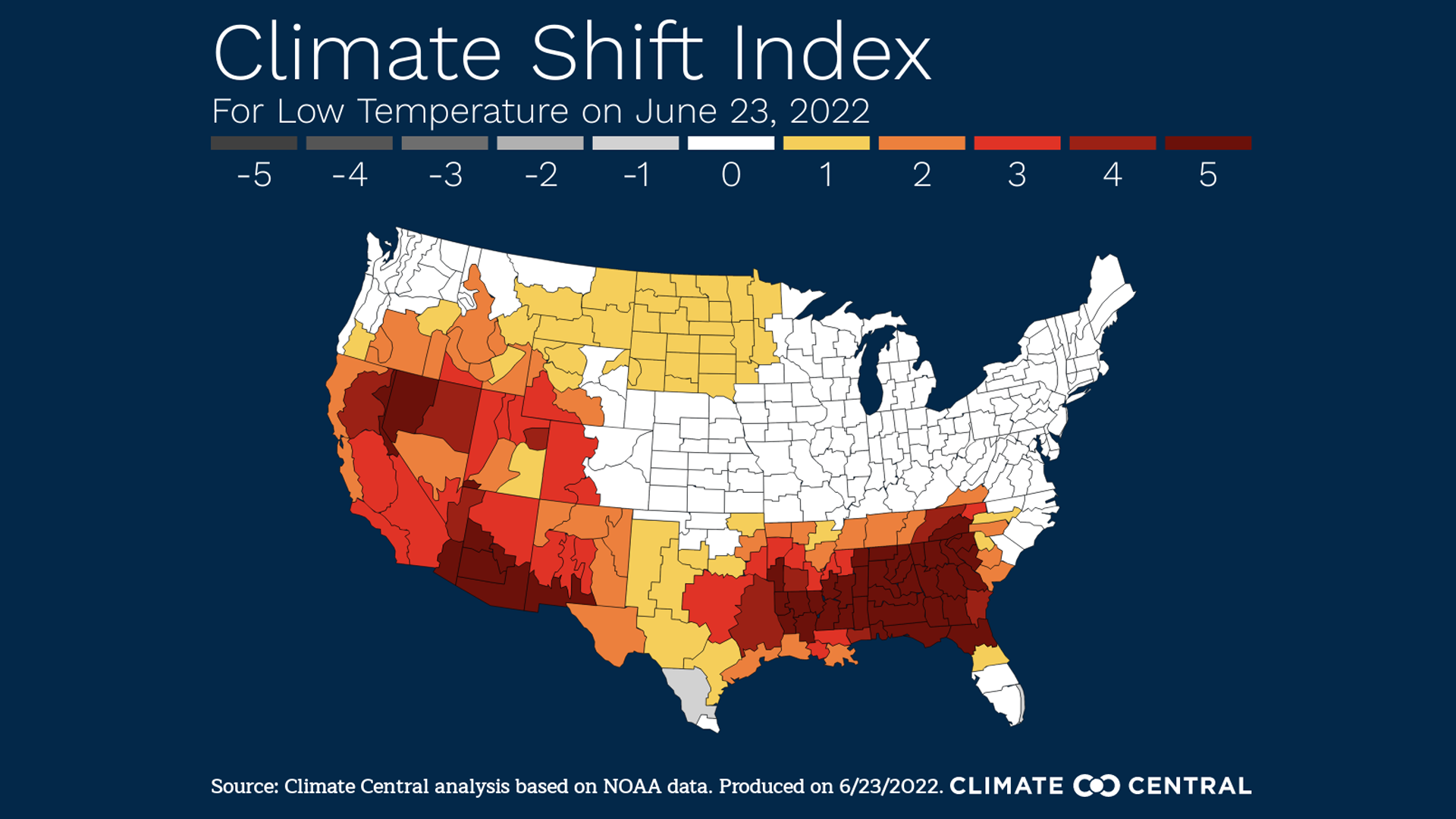| | | | | | | | | | | Axios What's Next | | By Joann Muller, Jennifer A. Kingson and Alex Fitzpatrick · Jun 27, 2022 | | Alex here. We're launching an exciting new project to track electric vehicle adoption across the U.S. — I'll let Joann tell you all about it in her story below. - Why did you buy an EV, or what's stopping you from doing so? Let us know at whatsnext@axios.com.
Today's Smart Brevity count: 1,107 words ... 4 minutes. | | | | | | 1 big thing: Tesla dominates as EV sales rise |  Data: S&P Global Mobility (formerly IHS Markit); Chart: Baidi Wang/Axios Tesla's grip on the growing U.S. electric vehicle (EV) market remains strong despite an onslaught of new competition, Joann Muller reports. Why it matters: The Elon Musk-led automaker pioneered the EV movement more than a decade ago, but only now is demand starting to take off. - EV registrations have doubled over the past year, to about 5% of all new cars, and shoppers have dozens of new choices — with more on the way.
What's happening: The historic shift away from gasoline will take years to play out, but Axios is tracking the revolution as it rolls across the U.S., using monthly vehicle registration data from S&P Global Mobility. - California has by far the largest market today, but EV adoption is also growing in some large cities in the Northeast, Florida and Texas. EV ownership remains limited in the Midwest.
- Over time, we'll be able to track the EV wave as it spreads across the country.
 Data: S&P Global Mobility; Chart: Jared Whalen/Axios Where it stands: So far, Tesla's dominance is secure. - Teslas accounted for 61% of all EVs registered in the U.S. in April, the latest month for which data is available.
- The next closest were Ford (8%), Hyundai (6%) and Kia (6%).
- Even Ford's much-heralded F-150 Lightning and Mustang Mach-E aren't making a dent. One reason: production is limited and the automaker stopped taking orders.
- Tesla Model Y registrations (14,152) were four times that of Ford's Mach-E (3,287) in April.
The risk for Tesla is that it's trying to fight off challengers with just two vehicles: the Model 3 and Model Y. - Sales of its older Model S and X have pretty much plateaued, and its Cybertruck has repeatedly been delayed.
Yes, but: Tesla has a "halo around the brand that is extraordinary and unique," says Tom Libby, S&P Global Mobility analyst. Besides, rival models "are just not setting the world on fire," Libby says. - General Motors' newest models, like the Cadillac Lyriq and Hummer EV pickup, are in limited supply. Its EVs won't land in big numbers for another year or two.
- Volkswagen's I.D.4 hasn't made much of a splash, either. But the I.D. Buzz, a modern interpretation of the VW bus, is coming next year.
- Challengers like Rivian, meanwhile, have run into manufacturing bottlenecks due to chip shortages and supply chain disruptions.
- Notable launches are coming soon from Honda, Jeep, BMW and others.
What to watch: EVs' share of North American vehicles is accelerating and could hit 28% by 2028, and 59% by 2035, per consulting firm AlixPartners. Share this story. |     | | | | | | 2. Remote work vibe check |  | | | Illustration: Sarah Grillo/Axios | | | | American workers really, really want pandemic-era work flexibility to stick around, a new McKinsey survey reveals, Alex Fitzpatrick reports. Why it matters: Offering remote or hybrid work is turning into table stakes for attracting high-skilled talent. Some of the survey's most interesting findings include ... - 58% of U.S. workers — 92 million people — say they can work remotely at least part time. 35%, meanwhile, can work remotely all the time.
- 87% of workers who can work remotely do so, at least one day a week.
Yes, but: Not everyone's getting — or taking advantage of — the opportunity to work from wherever. - Men (61%) are more likely to be offered remote work compared to women (52%). However, women given the chance to work remotely do so slightly more often (3.1 days per week, on average) than men (2.9 days).
- Older workers who can work remotely tend to do so more often than their younger colleagues — those 55-64 work an average of 3.1 days a week remotely, compared to 2.5 for those 18-24.
- A whopping 75% of people making $150,000 or more can work remotely, compared to just 47% of those making between $25,000-$49,999.
Where it stands: Many companies that have tried to force workers back to the office have had, er, difficulties. Others, meanwhile, see flexible work as a competitive advantage. - Yelp is the latest big company to go fully remote. "We learned that ... our people could thrive and be just as, if not more, productive while remote," co-founder and CEO Jeremy Stoppelman wrote in a memo announcing the move.
Share this story. |     | | | | | | 3. Climate attribution goes real-time |  | | | Map of the Climate Shift Index for overnight low temperatures on June 23. Photo courtesy of Climate Central | | | | A new tool called the "Climate Shift Index" (CSI) indicates climate change's influence on daily high and low temperatures across the U.S., Axios' Andrew Freedman reports. - The product, developed by nonprofit research and journalism organization Climate Central, is presented in a compelling visual format accessible to laypeople and weather pros alike.
Why it matters: Climate scientists are making great strides in teasing out human-caused global warming's role in worsening or causing extreme weather events, like heat waves and extreme rainfall. - These studies, known as extreme event attribution, have taken place following disasters and involve sifting through complex historical data and computer model simulations.
How it works: Based on methods recently published in a peer-reviewed journal, the CSI uses a weather model combined with other sources to quantify climate change's influence on daily highs and lows. The CSI may seem intuitive, but behind it lies years of work in determining how climate change is contributing to more heat records and fewer cold extremes. Read the rest. |     | | | | | | A message from Axios | | A better way to communicate with stakeholders | | |  | | | | The premium on effective communication has never been higher. Craft, deliver and track engaging stakeholder updates with Axios HQ. - Readers are 2x more likely to open an Axios HQ update than other internal updates.
See Axios HQ in action. | | | | | | 4. A fish by any other name |  | | | A bighead carp at the Shedd Aquarium in Chicago. Photo: Brian Cassella/Chicago Tribune via Getty Images | | | | "Invasive carp" doesn't sound very appetizing. But how about "copi"? Driving the news: The Illinois Department of Natural Resources has launched a campaign to rename the pestilent fish in the hopes that more people will eat them, Axios Chicago's Monica Eng reports. - The fish is more widely known as "Asian carp." But there's been a push to change their name to "invasive carp" over racial concerns.
Regardless of their name, they're destructive to lakes and rivers, consuming food normally eaten by native fish. - The Illinois campaign is meant to get more people to eat the fish in hopes of reducing their population in the Illinois River and stopping them from reaching Lake Michigan.
Flashback: The "Patagonian toothfish" might not sound delicious — but in 1977, a fish wholesaler rebranded them as "Chilean sea bass," and now they're on many a restaurant menu. Yes, but: Past efforts to rebrand the bottom-feeding carp haven't caught on. Share this story. |     | | | | | | 5. Moving into a 3D-printed home |  | | | Tiffany Terrell and her daughter stand outside their new home. Photo: Karri Peifer/Axios | | | | The owners of Richmond, Virginia's first 3D-printed house are set to move in next month, Axios Local's Karri Peifer reports. Why it matters: 3D-printed housing companies — like Virginia Housing, which built this one — hope the process will eventually make homes significantly cheaper. Details: The 1,550-square-foot, three-bedroom, two-bathroom house is in South Richmond and was listed at $235,000. What's next: 3D-printed houses will become more affordable once builders are able to construct multiple units at once, Chris Thompson, director of strategic housing for Virginia Housing, tells Axios. Go deeper: Joann dove into the world of 3D-printed houses back in October. Share this story. |     | | | | | | A message from Axios | | A better way to communicate with stakeholders | | |  | | | | The premium on effective communication has never been higher. Craft, deliver and track engaging stakeholder updates with Axios HQ. - Readers are 2x more likely to open an Axios HQ update than other internal updates.
See Axios HQ in action. | | | | Was this email forwarded to you? Get your daily dose of What's Next magic by signing up for our free newsletter here. |  | It's called Smart Brevity®. Over 300 orgs use it — in a tool called Axios HQ — to drive productivity with clearer workplace communications. | | | | | | Axios thanks our partners for supporting our newsletters. If you're interested in advertising, learn more here.
Sponsorship has no influence on editorial content. Axios, 3100 Clarendon Blvd, Suite 1300, Arlington VA 22201 | | | You received this email because you signed up for newsletters from Axios.
Change your preferences or unsubscribe here. | | | Was this email forwarded to you?
Sign up now to get Axios in your inbox. | | | | Follow Axios on social media:    | | | | | |










No comments:
Post a Comment